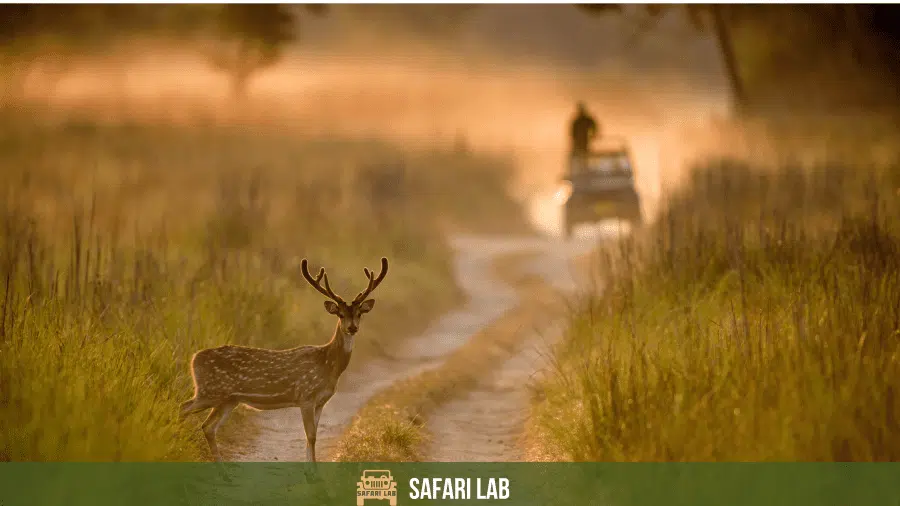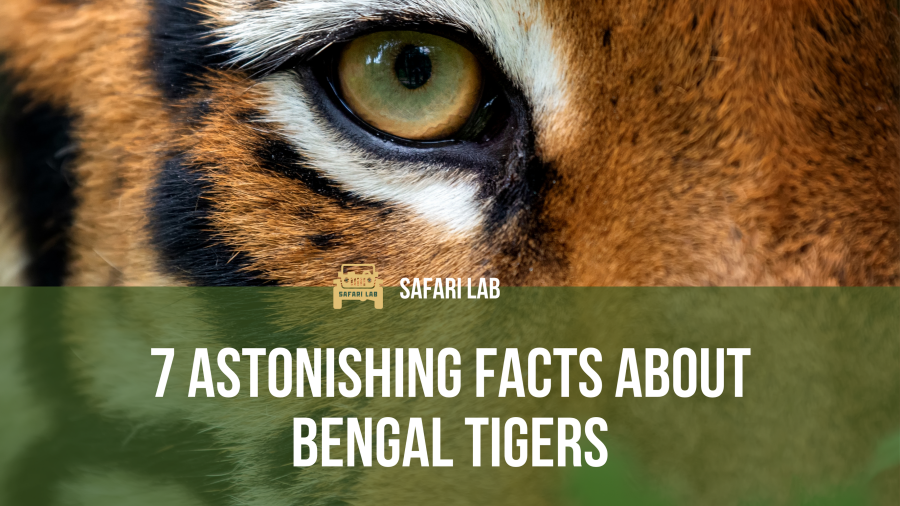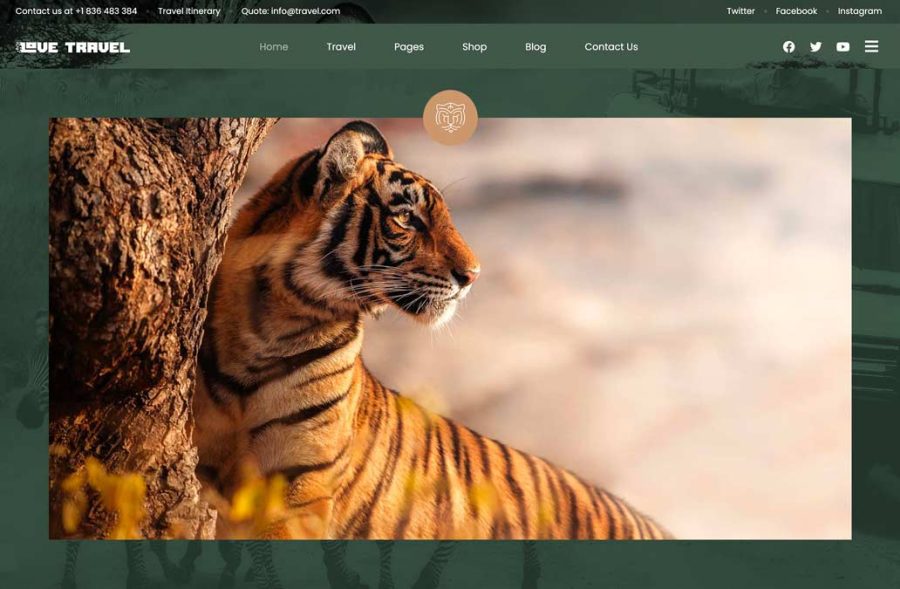So, you’re dreaming of catching a glimpse of India’s most elusive and breathtaking big cat—the black panther in India. Well, grab your safari hat, because this melanistic marvel is worth the chase.But let me warn you: spotting a black panther isn’t like bumping into your neighborhood alley cat.These guys have a serious knack for disappearing into the shadows like a pro magician. In this article, we will shed some light on where you can spot these elusive cats, or at least maximize the possibility of spotting them.With any given luck, you will be heading home with memory card bursting with pictures and your mind bursting with joy. Lets get started. Known for its tigers, Tadoba’s black panther is more like a ninja—rarely seen, but absolutely unforgettable when spotted. The advantages of visiting the Pangdi (Formerly known as Kolsa) range of Tadoba are not solely bumping into the black panther.This also happens to be one of the most scenic zones in Tadoba and is currently home to Kuwani Tigress and her sub adult cubs, as well as Shivani Tigress and her tiny cubs, who were spotted when the season opened this year (October 2024).Best time? October to June.
Known for its tigers, Tadoba’s black panther is more like a ninja—rarely seen, but absolutely unforgettable when spotted. The advantages of visiting the Pangdi (Formerly known as Kolsa) range of Tadoba are not solely bumping into the black panther.This also happens to be one of the most scenic zones in Tadoba and is currently home to Kuwani Tigress and her sub adult cubs, as well as Shivani Tigress and her tiny cubs, who were spotted when the season opened this year (October 2024).Best time? October to June.
What Exactly is a Black Panther? (Hint: It’s Not Another Species)
First things first—let’s clear up a common misconception. A black panther isn’t a separate species. Nope, it’s actually a leopard (Panthera pardus) with a cool genetic mutation called melanism.That just means the usual golden coat with rosettes gets swapped for a sleek, jet-black look.Still the same apex predator, but with a “goth” makeover. If you squint in the right light, you’ll notice the familiar rosette patterns hiding beneath the black fur. Think of them as the leopard’s tattoo sleeves.What is Melanism?
Melanism is a fascinating genetic trait that results in an overproduction of dark pigment, giving animals a black or near-black appearance. It occurs in various species, from leopards (like the black panther) to snakes, squirrels, and even birds. In many animals, melanism can offer survival advantages.For example, in forested habitats, darker coats provide better camouflage during nocturnal hunting, making it easier for predators like black panthers to stalk prey under the cover of darkness.Conversely, in some environments, melanistic individuals may absorb more heat, which is beneficial for reptiles in cooler climates.However, melanism isn’t just about stealth. In some species, such as the melanistic jaguar or black squirrel, it may also play a role in social dynamics, signalling dominance or aiding in mate selection.Melanism is driven by natural selection in different ways depending on the species and their environments, and while it can be advantageous, it also sometimes makes animals more visible in certain contexts, depending on the habitat and the presence of predatorsPrime Locations for Spotting the Black Panther in India
Alright, where can you find these black-clad leopards? Spoiler alert: it’s not going to be a walk in the park (literally), but there are some hotspots in India where you might just get lucky.Kabini, Karnataka
Let’s start with the king of black panther sightings. Kabini is home to Saaya, the world-famous black panther who’s taken Instagram by storm, thanks to photographer Shaaz Jung.His territory spans the Nagarhole and Kabini forests, and if you’re looking for drama, this is it. Kabini is where this stealthy panther has been playing “peek-a-boo” with wildlife enthusiasts for years. That said, there is just one individual black panther in the tourism zone of Kabini.So, its going to be an uphill battle trying to capture this one. In fact, numerous photographers have made repeated attempts to track down this black panther and ended up failing.Best time to visit? Try March to April when the jungle isn’t too dense.Tadoba Andhari Tiger Reserve, Maharashtra
If you thought Saaya was the only black-cloaked feline in India, think again. Tadoba has its own semi-melanistic black panther haunting the Kolsa range. Known for its tigers, Tadoba’s black panther is more like a ninja—rarely seen, but absolutely unforgettable when spotted. The advantages of visiting the Pangdi (Formerly known as Kolsa) range of Tadoba are not solely bumping into the black panther.This also happens to be one of the most scenic zones in Tadoba and is currently home to Kuwani Tigress and her sub adult cubs, as well as Shivani Tigress and her tiny cubs, who were spotted when the season opened this year (October 2024).Best time? October to June.
Known for its tigers, Tadoba’s black panther is more like a ninja—rarely seen, but absolutely unforgettable when spotted. The advantages of visiting the Pangdi (Formerly known as Kolsa) range of Tadoba are not solely bumping into the black panther.This also happens to be one of the most scenic zones in Tadoba and is currently home to Kuwani Tigress and her sub adult cubs, as well as Shivani Tigress and her tiny cubs, who were spotted when the season opened this year (October 2024).Best time? October to June.Kali Tiger Reserve, Karnataka
Lesser-known but equally captivating, Kali Tiger Reserve, formerly called Dandeli Anshi National Park boasts one of the highest densities of black panthers in India.However, sightings here are often restricted to camera trap images, as these cats are extremely elusive. The dense canopy and single safari routes are some of the reasons why sightings are considered low.But if you’re lucky, who knows?Northeast India – Kaziranga and Manas National Parks, Assam
Not just the southern forests, black panthers have been spotted in the dense rainforests of Assam too.Kaziranga, famous for its rhinos, is now also a known habitat for these “ghosts of the forest.”Manas, a UNESCO World Heritage Site, offers a similar chance to witness the magic of a black panther.Mhadei Wildlife Sanctuary, GoaYes, you read that right. Black panthers have been spotted even in Goa.When you’re done with the beaches, why not venture into the Western Ghats to see one of the rarest cats in the country. In fact, there have been repeated black panther in india sightings across the span of the western ghats, right from Maharashtra to Kerala.Recently, Mudumalai became a hotbed for photographers after a family of black panthers was spotted here, with melanistic cubs too. Bliss!Behavior and Mating (Spoiler: No, Their Cubs Aren’t Always Black)
Black panthers are, unsurprisingly, solitary and territorial—just like their regular leopard cousins.But what about their love life? If a black panther mates with a spotted leopard, the cubs could be either spotted or black, depending on genetics.There’s no guarantee you’ll get a litter of mini-Batmans—so don’t bet on an all-black squad.They’re also nocturnal hunters, and their dark coats give them an advantage in nighttime ambushes.Climbing trees? Yep, they’re experts at it, often dragging their prey up into the branches to keep it safe from scavengers(The Conservation Challenges
While the idea of spotting one of these majestic creatures might be thrilling, it’s important to note that black panthers face serious threats. Habitat destruction, human-wildlife conflict, and poaching for their unique pelts are major concerns. India’s conservation efforts, including anti-poaching measures and protected areas, are working to ensure that these rare cats don’t vanish from the wild(The Conservation Efforts to Protect the black panther in India
Black panthers in India are an endangered species, making their conservation a top priority for wildlife organizations in the country. These organizations work tirelessly to protect these magnificent creatures and their habitats, implementing various measures to combat threats such as hunting and habitat loss.The conservation efforts in India are crucial in ensuring the survival and well-being of black panthers for future generations. These efforts involve raising awareness about the importance of protecting black panthers, conducting research to better understand their behavior and habitat requirements, and implementing conservation strategies to mitigate the threats they face.Indian wildlife conservation organizations play a vital role in these conservation efforts. Their work involves collaboration with local communities, government agencies, and other stakeholders to create sustainable conservation plans and promote the coexistence of humans and black panthers.The Role of Indian Wildlife Conservation Organizations
Indian wildlife conservation organizations are at the forefront of protecting black panthers. Through their dedicated efforts, they contribute to the following:- Setting up protected areas: These organizations work towards establishing protected areas that serve as safe havens for black panthers, ensuring their habitats are preserved and protected. These areas provide essential resources and space for black panthers to thrive.
- Anti-poaching measures: Conservation organizations in India work closely with law enforcement agencies to combat poaching activities targeting black panthers. These efforts include strengthening anti-poaching patrols, implementing advanced surveillance techniques, and raising awareness about the consequences of wildlife trafficking.
- Habitat restoration: Recognizing the importance of intact habitats for black panther survival, conservation organizations engage in habitat restoration projects. These projects aim to restore degraded areas, plant native vegetation, and create corridors that connect fragmented habitats, allowing black panthers to move freely.
- Community engagement: Effective conservation cannot be achieved without the support and involvement of local communities. Wildlife organizations actively engage with communities living in proximity to black panther habitats, educating them about the ecological significance of these creatures and fostering a sense of stewardship towards their protection.
- Wildlife Conservation Society of India (WCSI): WCSI focuses on research, conservation action, and capacity-building initiatives to ensure the long-term survival of India’s wildlife.
- WWF-India: WWF-India works to protect the natural habitats of black panthers and other endangered species through policy advocacy, community engagement, and sustainable development projects.
- Wildlife Trust of India (WTI): WTI implements innovative conservation projects to address human-wildlife conflicts, protect critical habitats, and prevent wildlife trafficking.
The Fascination with Black Panthers
The enigmatic nature of black panthers has captured the imagination of people around the world. Their unique beauty and elusive behavior make them a subject of fascination for wildlife enthusiasts.The presence of black panthers in India contributes to the rich biodiversity of the country and highlights the importance of preserving natural habitats. The fascination with black panthers serves as a reminder of the interconnectedness of all species and the need to protect and conserve our world’s wildlife.The Way Forward
To overcome the challenges and ensure the conservation of black panthers in India, the following steps are essential:- Strict enforcement of wildlife protection laws and anti-poaching measures.
- Collaborative efforts between government agencies, conservation organizations, and local communities to safeguard black panther habitats.
- Promotion of sustainable practices that minimize human impact on the environment and reduce conflicts with wildlife.
- Investment in research and monitoring programs to gather accurate data on black panther populations and their behavior.
- Educational initiatives that raise awareness about the importance of wildlife conservation among the public, particularly the younger generation.
FAQs About Black Panther in India
1. Are black panthers and leopards the same? Yes! Black panthers are simply leopards (Panthera pardus) with a genetic mutation called melanism, which gives them their dark coats. Underneath, they still have the same rosette patterns as their spotted counterparts.2. Where can I spot black panthers in India? Some of the top places for black panther sightings include Kabini, Tadoba, Dandeli-Anshi Tiger Reserve, and the forests of Assam like Kaziranga and Manas. They are found mostly in the dense tropical forests of southern and northeastern India(3. How rare are black panthers in India? Black panthers are extremely rare. While exact population numbers are unknown, sightings are scattered across a few protected areas, making them a rare treasure for wildlife enthusiasts(4. Can black panthers mate with regular leopards? Yes, black panthers and spotted leopards belong to the same species. When they mate, the cubs can be either melanistic (black) or spotted, depending on genetic factors(5. What do black panthers eat? Their diet is similar to that of regular leopards, consisting of deer, wild boar, and smaller mammals. They are opportunistic hunters and can adapt their diet to the available preyConclusion
Spotting a black panther in the wild is nothing short of a magical experience. Whether you’re in the dense forests of Kabini or the rolling hills of Assam, the thrill of seeing one of these shadowy predators will stay with you forever.But it’s not just about the sighting—it’s also about understanding the delicate balance these creatures maintain within their ecosystems.So, the next time you’re planning a safari, remember: patience, silence, and a bit of luck might just reward you with one of nature’s most stunning spectacles.Recent Posts
Archives
Categories
Customized Trip Form
Author

Sanjay Nair is a multi-award-winning wildlife photographer, conservation storyteller, and co-founder of Safari Lab. With over 15 years of fieldwork and a Nature in Focus award under his belt, Sanjay’s photographs and stories have been published in global outlets such as The Times & The Guardian.
View all posts


























